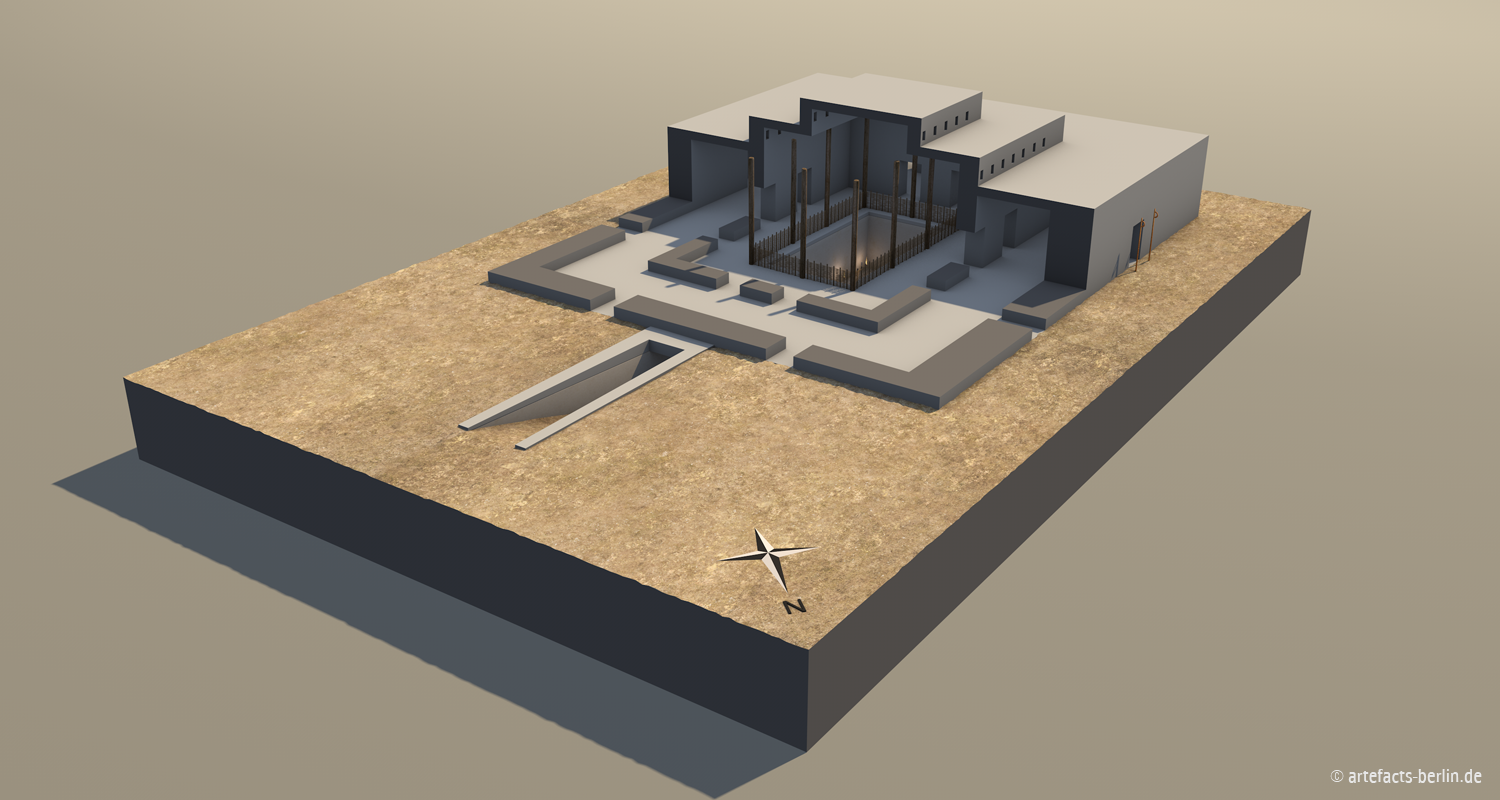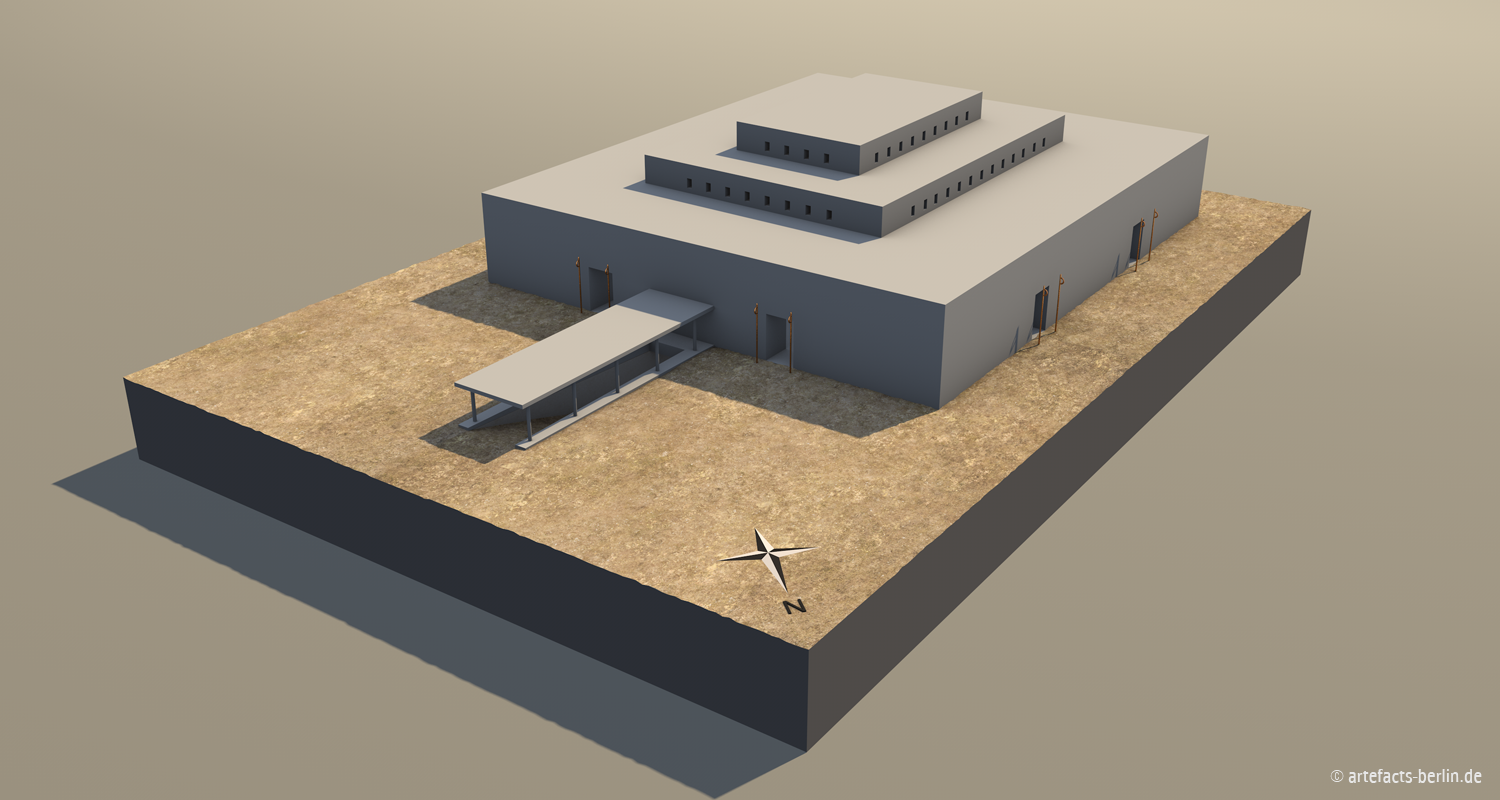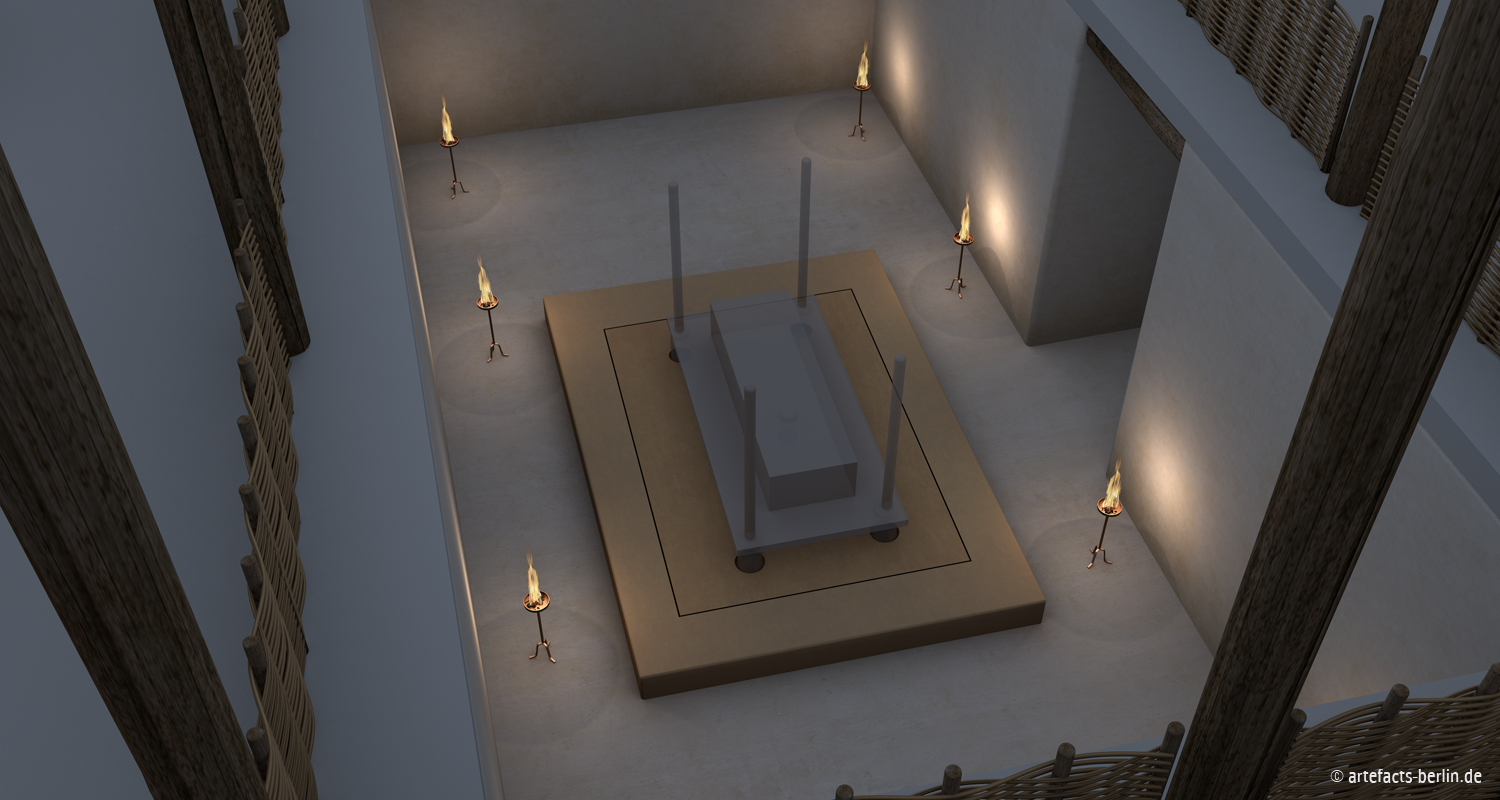About the project
Uruk/Warka, situated in modern-day Iraq, is one of the first cities in the world, and was populated almost without interruption for over 5,000 years – from the 4th millennium BCE to the 1st millennium CE. Uruk is famous for the invention of cuneiform writing at the end of the 4th millennium, the so-called “late Uruk period”.
The Stone Building (Steingebäude) of Uruk is a semi-subterranean building made of stone, that comprises of three rectangle rooms, that are nested in each other, with its central room C. The rooms were over 3m high. The access was made trough a ramp leading down from the surface level.The inner floor was paved with stone slabs.
In the central room C, a pedestal of unknown function made of stone and plaster was found. In the plaster, five circular impressions could be seen, that formed a rectangle of 130 by 260 cm and indicate a big object standing on top of the pedestal. According to the interpretation of the Stone Building as a grave, it might be possible that the object was either a burial or cenotaph.
It is also unclear, if the building was only sub-terranean and had a flat or no roof at all, or if a super-structure was standing above the Stone Building. The location of the Stone Building right beside of the Anu Ziqqurrat seems to indicate a special function however.
Literature
- Butterlin, P. 2018: Architecture et société au Proche-Orient ancien : Les bâtisseurs de mémoire en Mésopotamie (7000-3000 avant J-C), Paris.
- Eichmann, R. 2007: Uruk. Architektur I. Von den Anfängen bis zur frühdynastischen Zeit (=AUWE 14), Textteil und Beilagen, Rahden.




